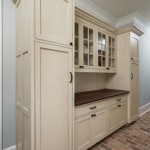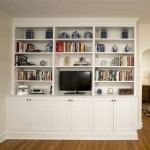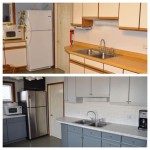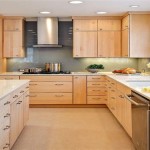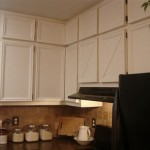Can I Paint Wood Cabinets Without Sanding?
Transforming the look of your wood cabinets without sanding is a desirable option for many homeowners. While sanding is generally regarded as a crucial step in painting wood, it can be a tedious and time-consuming process. The question arises: can you paint wood cabinets without sanding? The answer is yes, although it requires careful preparation and adherence to specific techniques.
Benefits of Painting Wood Cabinets Without Sanding
There are several advantages to painting wood cabinets without sanding, including:
- Time-saving: Eliminating the sanding step can significantly reduce the time it takes to complete the painting project.
- Effort-saving: Sanding can be physically demanding, especially for large or intricate cabinets.
- Preservation of wood finish: Sanding can remove the original finish of the wood, potentially damaging its integrity.
Essential Steps for Painting Wood Cabinets Without Sanding
To achieve a successful paint job without sanding, follow these essential steps:
- Clean the cabinets thoroughly: Remove all dirt, grease, and dust using a TSP (trisodium phosphate) cleaner or a degreaser. Rinse well with clean water and allow to dry completely.
- Lightly sand any rough areas or raised grain: Use a fine-grit sandpaper (220 grit or higher) to smooth out any uneven surfaces or raised grain. This will help ensure a smooth paint finish.
- Use a deglosser or liquid sander: Apply a deglosser or liquid sander to the cabinets. These products create a slightly abrasive surface, improving paint adhesion.
- Apply a primer: Apply a high-quality primer specifically designed for painting over wood surfaces. This will provide a stable base for the paint and help prevent bleed-through of tannins (dark wood stains).
- Paint the cabinets: Use a brush or roller to apply the paint in thin, even coats. Allow each coat to dry completely before applying the next.
- Protect the finish: Once the paint is dry, apply a clear polyurethane finish to protect the surface from wear and tear. This will also enhance the durability and shine of the paint.
Tips for a Successful Paint Job
- Use high-quality materials: Invest in a good primer, paint, and polyurethane finish to ensure a professional-looking result.
- Prepare the cabinets properly: Cleaning, deglossing, and priming are essential for a smooth and long-lasting finish.
- Apply thin coats of paint: Multiple thin coats will provide better coverage and prevent runs and drips.
- Allow ample drying time: Give each coat of paint and polyurethane sufficient time to dry before applying the next. This will ensure proper adhesion and prevent peeling or cracking.
- Test the paint on an inconspicuous area first: Check the paint color and finish on a small area before applying it to the entire cabinet to avoid any surprises.
Conclusion
Painting wood cabinets without sanding is indeed possible with careful preparation and proper techniques. By following the outlined steps and tips, you can achieve a professional-looking finish without the hassle of sanding. Remember to use high-quality materials, properly prepare the cabinets, and allow ample drying time to ensure a successful and lasting paint job.

Painted Wood Cabinets Vs Stained A Questionnaire Kylie M Interiors

Our Painted Kitchen Cabinets The Little By Home

Painted Wood Cabinets Vs Stained A Questionnaire Kylie M Interiors

Refinish Bathroom Vanity Diy Project How To Stain Oak Cabinets

Do You Have To Sand Cabinets Before Painting Pa Kitchen

Kitchen Cabinets Here S When To Replace Reface Or Repaint

How To Paint Kitchen Cabinets Without Sanding Or Priming

How To Paint Laminate Kitchen Cabinets Perfect Finish Tips

Painted Wood Cabinets Vs Stained A Questionnaire Kylie M Interiors

Kitchen Cabinets Here S When To Replace Reface Or Repaint
Related Posts


